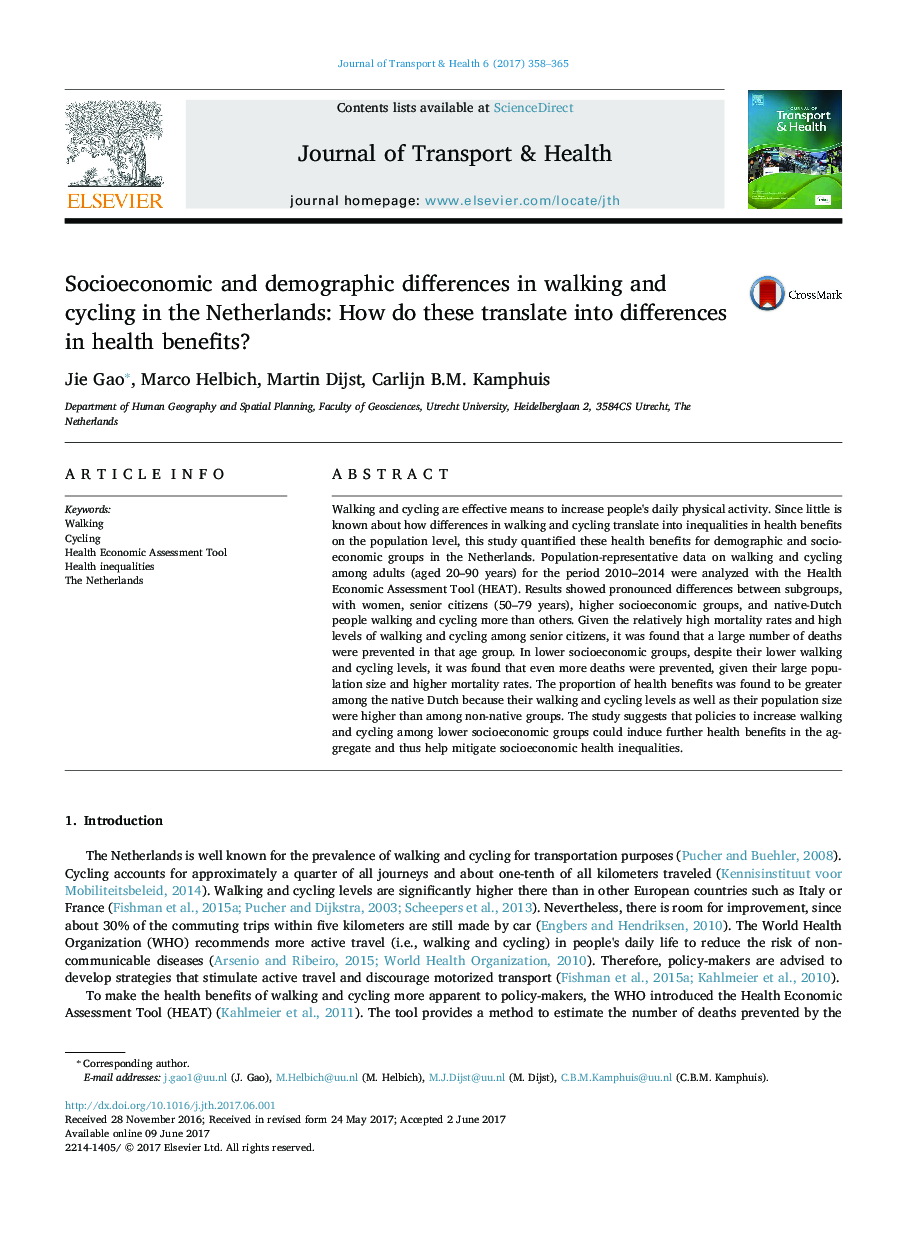| کد مقاله | کد نشریه | سال انتشار | مقاله انگلیسی | نسخه تمام متن |
|---|---|---|---|---|
| 5117672 | 1485455 | 2017 | 8 صفحه PDF | دانلود رایگان |
- Walking and cycling have great benefits for population health.
- This study examines differences in walking and cycling between population subgroups.
- We found substantial differences in walking and cycling, and gained health benefits.
- Health benefits for a subgroup depend on walking and cycling levels, population size, and mortality rate.
- Walking and cycling among lower socioeconomic groups should be promoted.
Walking and cycling are effective means to increase people's daily physical activity. Since little is known about how differences in walking and cycling translate into inequalities in health benefits on the population level, this study quantified these health benefits for demographic and socioeconomic groups in the Netherlands. Population-representative data on walking and cycling among adults (aged 20-90 years) for the period 2010-2014 were analyzed with the Health Economic Assessment Tool (HEAT). Results showed pronounced differences between subgroups, with women, senior citizens (50-79 years), higher socioeconomic groups, and native-Dutch people walking and cycling more than others. Given the relatively high mortality rates and high levels of walking and cycling among senior citizens, it was found that a large number of deaths were prevented in that age group. In lower socioeconomic groups, despite their lower walking and cycling levels, it was found that even more deaths were prevented, given their large population size and higher mortality rates. The proportion of health benefits was found to be greater among the native Dutch because their walking and cycling levels as well as their population size were higher than among non-native groups. The study suggests that policies to increase walking and cycling among lower socioeconomic groups could induce further health benefits in the aggregate and thus help mitigate socioeconomic health inequalities.
Journal: Journal of Transport & Health - Volume 6, September 2017, Pages 358-365
